The reason for this is that the virus designers test their new viruses on the major anti-virus applications to make sure that they are not detected before releasing them into the wild. sup91;13593;supppSome new viruses, particularly ransomware, use polymorphic code to avoid detection by virus scanners. Jerome Segura, a security analyst with ParetoLogic, explained:sup91;13693;suppblockquotepIt's something that they miss a lot of the time because this type of [ransomware virus] comes from sites that use a polymorphism, which means they basically randomize the file they send you and it gets by well-known antivirus products very easily.
I've seen people firsthand getting infected, having all the pop-ups and yet they have antivirus software running and it's not detecting anything. It actually can be pretty hard to get rid of, as well, and you're never really sure if it's really gone.
Cav vs vav systems/
Constant Air Volume and Variable Air Volume: Difference
In cav vs vav systems modern world, the building sector demands comfort and energy efficiency. The design of heating, ventilation and air conditioning (HVAC) systems has a significant impact on both, and working with a qualified engineering firm has a positive impact on the final outcome.
A key decision in HVAC design is selecting an adequate air-handling configuration: constant air volume (CAV) or variable air volume (VAV). Each option has advantages and disadvantages, and using the right configuration enhances comfort and efficiency.
This article provides an overview of CAV and VAC systems, describing the principles and calculations used by HVAC engineers during the design process.
Get an HVAC design that meet the needs of your building.

Constant Air Volume Systems
CAV systems keep a constant airflow, as their name implies, and the desired indoor conditions are reached by adjusting the air supply temperature. For example, when a building requires a higher cooling output on a hot summer day, the CAV system delivers colder air. In chilled vav gorgeous mp3 download systems, the cooling effect depends on the cold water flow delivered to the fan coil unit. In turn, the water flow controller operates based on the thermostat settings.
CAV systems can be of single-zone or multi-zone types, although they are better suited for single-zone applications where the load experiences minimal change over time. Some examples are auditoriums, theaters and museums. Multi-zone CAV systems require duct heating to deliver different air temperatures for individual zones, which reduces their energy efficiency.
The operation of a multi-zone CAV cav vs vav systems can be described best with an example. Consider the following design conditions:
An indoor air-handling unit (AHU) cav vs vav systems three zones (A, B and C).
Each of the three zones has a dedicated thermostat.
The AHU gets cold water from a chiller with a cooling tower.
Air duct heaters are attached to the main branches serving individual zones.
The thermostats are set at 55°F (A), 68°F (B) and 72°F (C).
The AHU delivers cool air at 55°F.
Once the supply air enters the duct system, it can only be heated and not cooled. Therefore, it must be supplied at the lowest of the three temperatures required - 55°F for zone A in this case. After zone A is served, the air flow can be heated to the temperatures required for other zones: 68°F for zone B and 72°F for zone Cav vs vav systems the operating principle is simple, it has an efficiency limitation. Part of the cooling output is wasted when air is reheated for zones B and C, and the duct heaters themselves also consume energy.
Variable Air Volume Systems
As you might guess, VAV systems keep the air temperature constant, and instead they adjust airflow depending on the load. VAV systems can have single-zone, multi-zone or dual duct configurations. Just like CAV is the preferred option in single-zone systems, VAV is recommended for multi-zone systems.
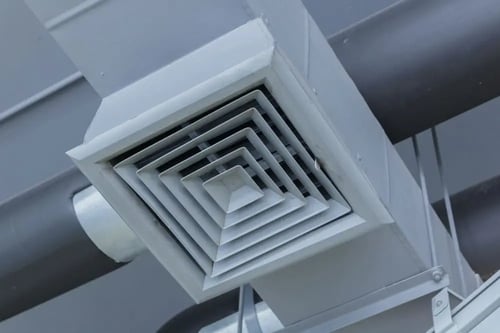
Dual duct VAV systems have separate ducts for hot and cold air, and each zone has a plenum where their airflow is mixed. The ratio of hot and cold air depends on the desired temperature for each particular zone. This HVAC configuration is the most expensive in terms of installation, operation and maintenance.
Multi-zone systems have VAV boxes that control the airflow supplied to individual zones. Unlike CAV, the cold water flow supplied to the fan coil unit is kept constant. VAV systems achieve their full potential in applications where there a multiple zones with variable load. Some examples are malls, hotels and office buildings.
VAV boxes have a role similar to the duct heaters used in a CAV system. Instead of reheating air according to the needs of each individual zone, the airflow is controlled while keeping temperature constant.
Basic Calculations in CAV and VAV Design
The HVAC design process involves complex calculations and energy modeling. However, the equations that describe system operations are simple. This section describes how temperature and airflow are adjusted according to load.
The starting point is the sensible heat gain equation, which is fundamental in HVAC systems:
Where:
- Q = Load of the room or zone being served (BTU / hour)
- CFM = Airflow in cubic feet cav vs vav systems minute
- ΔT = Difference between the room temperature and the supply air temperature
Example 1 - VAV Cav vs vav systems assume that a room has a load (Q) of 10,000 BTU/h, with an indoor temperature of 75°F and a supply air temperature of 55°F. In this case, the difference is 20°F. To calculate the required airflow, the sensible heat equation can be rearranged:- Q = 1.08 x CFM x ΔT
- CFM = Q ÷ (1.08 x ΔT)
- CFM = 10,000 BTU/h ÷ (1.08 x 20°F) = 463 cfm
In this case, the VAV system would have to adjust airflow to 463 cfm for the corresponding zone. Let’s observe the effect when the load is increased to 12,000 BTU/h.
- CFM = 12,000 BTU/h ÷ (1.08 x 20°F) = 555 cfm
The temperature difference of 20°F is kept constant under a load of 12,000 BTU/h, while increasing airflow to 555 cav vs vav systems 2 - CAV System
In this case, the cooling load and room temperature are the same used in the example above: 10,000 BTU/h and cav vs vav systems. However, the airflow is fixed at 500 cfm and the air supply temperature is adjusted. The sensible heat equation would be rearranged as follows:
- ΔT = Q ÷ (1.08 x CFM)
- ΔT = 10,000 BTU/h ÷ (1.08 x 500 cfm)
- ΔT = 18.52°F
The cav vs vav systems supply must be 18.52°F below room temperature, which is equivalent to 56.48°F. Repeating the calculation for 12,000 BTU/h, the following result is achieved:
- ΔT = Q ÷ (1.08 x CFM)
- ΔT = 12,000 BTU/h ÷ (1.08 x 500 cfm)
- ΔT = 22.22°F
In this case, the required air supply temperature is 52.78°F.
Conclusion
HVAC engineers can choose between CAV and VAV systems depending on the application. While a CAV system uses variable air temperature and constant airflow, a VAV system keeps constant temperature and variable airflow. CAV systems are better suited for single-zone applications where the load experiences little change, while VAV systems are the best option vav ecmo vs va ecmo multi-zone applications vav ecmo vs va ecmo a constantly changing load.
Make sure your mechanical installations are code compliant and energy efficient, while getting a 50% faster turnaround. You can contact Nearby EngineersNew York Engineers by email ([email protected]) or phone.
Did you know thatHVAC systems in commercial buildings are responsible for 40% of the building’s total energy use?
Given how much there is at stake, it’s no surprise that building owners cav vs vav systems always on the lookout for new systems and technologies to reduce these costs as much as possible.
When it comes to energy savings on heating and cooling, business owners will have two primary options to choose from: constant air volume (CAV) and variable air volume (VAV) systems. Both options are viable ways to set up an energy efficient HVAC system, and cooling only vav sequence of operation most appropriate choice will depend on your specific facility’s needs.
Let’s compare VAV vs CAV and why a building owner might choose one over the other.
A Summary of VAV vs. CAV
CAV and VAV are types of ventilation systems that supply air to each building region (or “zone”) and help regulate internal air temperatures.
CAV is the older of the two options, leveraging a centralized duct system and compressor to supply constant air flow to different zones.
While CAV systems can vary a building’s heating/cooling rate to create a comfortable and constant temperature, it has a harder time regulating temperature across multiple zones. Airflow volume is fixed, meaning that it’s less able to be adjusted to the requirements of each zone.
In contrast, VAV systems supply variable air flow at a constant temperature, using fans and dampers to manage cool air flow and maintain temperature and humidity conditions of different zones. This type of system requires installation of more HVAC components, such as:
- VAV boxes
- Fans and fan speed controls
- Duct dampers
VAV systems automatically adjust dampers to accommodate the airflow and temperature needs of each zone, making it a great option for larger facilities with varying temperature needs. It’s an approach that uses mixed air to balance heating and cooling in each region and offers a more flexible, cost-effective HVAC system.
Comparing the Pros & Cons of VAV vs CAV
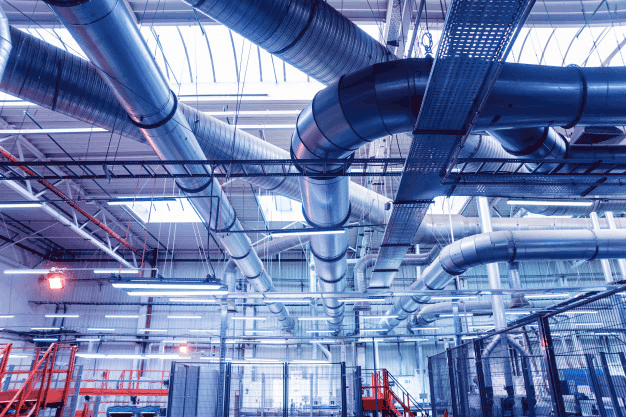
When comparing these two HVAC cav vs vav systems, why would a building owner choose one over the other?
CAV Benefits
CAV systems are older but remain viable ways to manage HVAC needs. Benefits include:
- Simple design
- Easy installation
- Lower up-front installation costs
- Ideal for single-zone applications
CAV Drawbacks
However, the simplicity of CAV cav vs vav systems cuts both ways, making it less ideal for more extensive HVAC needs:
- Provides only fixed volume airflow
- Limited options (such as manual dampers) for zone-level air flow adjustment and adaptability
- Lower energy efficiency overall
- Poor humidity cav vs vav systems Benefits
As the newer of the two HVAC options, VAV offers distinct benefits for commercial building owners, which include:
- Better control over airflow, temperature, and humidity
- Multi-zone conditioning through built-in dampers
- More cost-effective ventilation overall - less fan power is needed to maintain each climate zone
VAV Drawbacks
Although VAV offers big benefits to HVAC efficiency, this type of system comes with drawbacks as well, such as:
- More complicated infrastructure design that leverages more advanced fan controls and dampers
- Higher up-front costs than CAV installations
Despite its drawbacks, note that these up-front costs tend to be offset by the lower operating cav vs vav systems of the system itself.
Which Type of System Is Best?
CAV may be the best option when a building’s ventilation load needs are constant for long periods. In other words, CAV works best when a building must be heated/cooled to a specific temperature with little variability.
This applies to single-zone applications, such as small warehouses. Or, multi-zone applications with similar thermal requirements, including small office buildings with multiple rooms
Additionally, CAV is an energy efficient choice for facilities with similar climate needs that operate 24/7, including :
- Manufacturing facilities
- Call centers
- Convenience stores
- Smaller retail establishments
CAV is ideal for applications where ventilation load shows little variation.
Conversely, VAV is best for situations where ventilation is subject to part-load conditions. Generally, VAV is ideal for big, commercial areas where ventilation demands are continually changing, such as:
- Large-scale retail businesses
- Hospitals
- Airports
- Colleges
- Restaurants
In general, VAV offers better climate control and energy efficiency over the long-term through its more advanced regulation features, making it the more viable option for the majority of large, commercial HVAC applications.
In most cases, when comparing single zone vav vs vav ecmo vs va ecmo air, single zone VAV may offer in-depth control features that never get used. When only one zone needs to be regulated, CAV offers an approach that’s quicker to implement and cheaper to install.
Of course, CAV and VAV aren’t the only HVAC options available to businesses. Cutting-edge solutions such as underfloor air distribution (UFAD) offer substantial advantages over traditional HVAC and represent a superior way to cav vs vav systems air flow throughout a building.
Underfloor Air Distribution (UFAD): A Superior Alternative to Traditional HVAC Systems
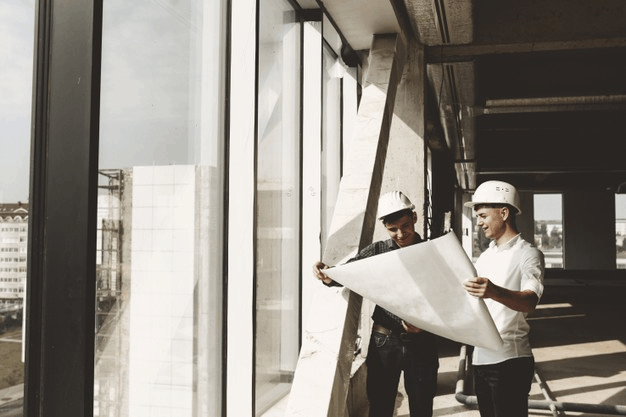
UFAD is a revolutionary approach to HVAC that leverages underfloor HVAC installations accessible by raised access floor panels. Unlike with traditional HVAC, UFAD systems introduce conditioned supply air at the floor level through diffusers, which is then exhausted through return vents in the ceiling to mitigate cross-contamination.
UFAD offers several advantages over the traditional HVAC, such as:
- Easier access to building services
- Improved ventilation & air quality
- Lower energy cav vs vav systems by 30%
- Lower lifecycle costs
- Plus much more
Building owners seeking even more modern and energy efficient HVAC infrastructure should consider newer options such as UFAD.
Consider the ongoing debatesbetween VAV vs VRF vs radiant vs chilled beams, and you’ll see how different strategies can yield different benefits. This is why it’s critical to work with an experienced partner who can show you the most efficient way to set up your system.
AirFixture has successfully executed hundreds of UFAD projects in the last 20 years and will bring that expertise to work for your project. Contact the experts at AirFixture today to learn more about UFAD. Let us design the perfect UFAD solution for your commercial building.
CAV System:
- It is cheaper in price.
- They are simple and sleek in design.
- They are also very reliable.
- They have on and off control system.
- Don’t contain the supply air modulation to vary the air temperature and flow.
VAV System:
- They are a bit expensive as compared to the CAV Systems.
- The fan noise is less and un-noticeable.
- It holds more precise temperature control.
- They contain the supply air modulation system to vary the air flow.
Working of the VAV System:
Basically, this VAV box is a metal sheet type of thing with dampers and controls. There is a thermostat inside the box, which monitors the temperature and then air flow is supplied accordingly. The controller and the thermostat are inter-connected. Whereas, the controller is responsible of varying the temperature and the flow of the air according to the temperature outside.
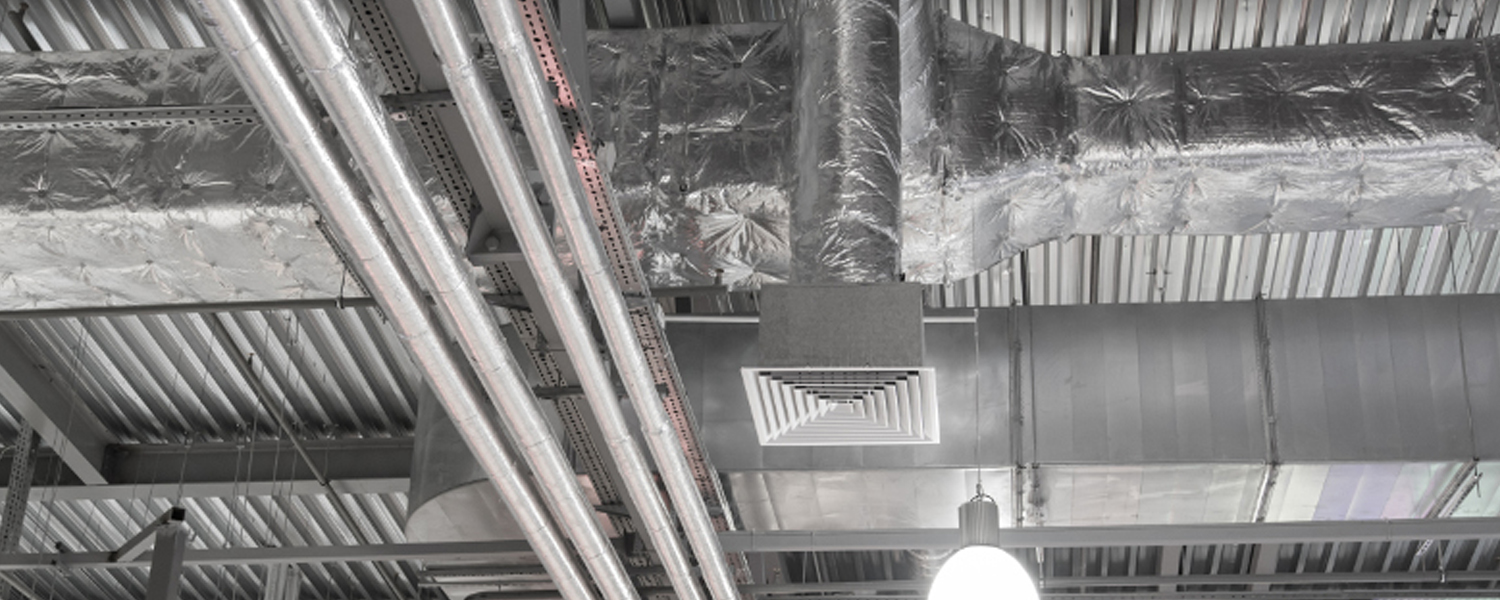
Vav and Cav Applications
VAV (Variable Air Volume) terminal units are the units that provide temperature control by changing the amount of conditioned air sent to laboratories according to the signal it will receive from the thermostat or automation system. CAV (Constant Air Volume) are fixed air volume systems. They are used in air conditioning and ventilation systems to provide the desired fresh air to the spaces, to transmit or exhaust air at a constant flow rate.
By using VAV boxes, constant air flow can be provided in the operating rooms and the operating room can be kept under constant pressure. The CAV boxes provide a constant air flow to the environment, keeping the pressure constant in the event of filter contamination or failure.
The most important difference between CAV and VAV systems; CAV system is to perform air-conditioning at the flow rate and the room temperature settings by modulating the blowing temperature. In VAV systems, the blowing temperature is kept constant and the room temperature is realized with flow regulation.
Variable air volume
Heating or air-conditioning system
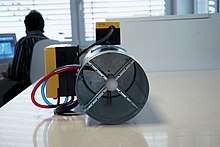
Variable air volume (VAV) is a type of heating, ventilating, and/or air-conditioning (HVAC) system. Unlike constant air volume (CAV) systems, which supply a constant airflow at a variable temperature, VAV systems vary the airflow at a constant or varying temperature.[1][2] The advantages of VAV systems over constant-volume systems include more precise temperature control, reduced compressor wear, lower energy consumption by system fans, less fan noise, and additional passive dehumidification.[3]
Box technology[edit]
The most simple form of a VAV box is the single duct terminal configuration, which is connected to a single supply air duct that delivers treated air from an air-handling unit (AHU) to the space the box is serving.[2] This configuration can deliver air at variable temperatures or air volumes to meet the heating and cooling loads as well as the ventilation rates required by the space.[2]
Most commonly, VAV boxes are pressure independent, meaning the VAV box uses controls to deliver a constant flow rate regardless of variations in system pressures experienced at the VAV inlet.[2] Cooling only vav sequence of operation is accomplished by an airflow sensor that is cav vs vav systems at the VAV inlet which opens or closes the damper within the VAV box to adjust the airflow.[2] The difference between a CAV and VAV box is that a VAV box can be programmed to modulate between different flowrate setpoints depending on the conditions of the space. The VAV box is programmed to operate between a minimum and maximum airflow setpoint and can modulate the flow of air depending on occupancy, temperature, or other control parameters.[4] A CAV box can only operate between a constant, maximum value, or an “off” state.[5] This difference means the VAV box can provide tighter space temperature control while using much less energy. Another reason why VAV boxes save more energy is that they are coupled with variable-speed drives on fans, so the fans can ramp down when the VAV boxes are experiencing part load conditions.[6][7]
It is common for VAV boxes to include a form of reheat, either electric or hydronic heating coils.[4] While electric coils operate on the principle of electric resistance heating, whereby electrical energy is converted to heat via electric resistance, hydronic heating uses hot water to transfer heat from the coil to the air. The addition of reheat coils allows the box to adjust the supply air temperature to meet the heating loads in the space while delivering the required ventilation rates.[2] In some applications it is possible for the space to require such high air-change rates it causes a risk of over-cooling.[5] In this scenario, the reheat coils could increase the air temperature to maintain the temperature setpoint in the space.[2] This scenario tends to happen during cooling seasons in buildings which have perimeter and interior zones. The perimeter zones, with more sun exposure, require a lower supply air temperature from the air-handling unit than the interior zones, which have less sun exposure and tend to stay cooler than the perimeter zones when left un-conditioned. With the same supply air temperature being delivered to both zones, the reheat coils must heat the air for the interior cav vs vav systems to avoid over-cooling.[8]
Multiple-zone systems[edit]
The air blower's flow rate is variable. For a single VAV air handler that vave studio 915 fremont multiple thermal zones, the flow rate to each zone must be varied as well.
A VAV terminal unit,[9] often called a VAV box, is the zone-level flow control device. It is basically a calibrated air damper with an automatic actuator. The VAV terminal unit is connected to either a local or a central control system. Historically, pneumatic control was commonplace, but electronic direct digital control systems are popular especially for mid- to large-size applications. Hybrid cav vs vav systems, for example having pneumatic actuators with digital data collection, is popular as well.[10]
A common commercial application is shown in the diagram. This VAV system consists of a VAV box, ductwork, and four air terminals.
Fan control for a pressure-independent system[edit]
Control of the system's fan capacity is critical in VAV systems. Without proper and rapid flow rate control, the system's ductwork, or its sealing, can easily be damaged by overpressurization. In the cooling mode of operation, as the temperature in the space is satisfied, a VAV box closes to limit the flow of cool air into the space. As the temperature increases in the space, the box opens to bring the temperature back down. The fan maintains a constant static pressure in the discharge duct regardless of the position of the VAV box. Therefore, as the box closes, the fan slows down or restricts the amount of air going into the supply duct. As the box opens, the fan speeds up and allows more air flow into the duct, maintaining a constant static pressure.[11]
One of the challenges for VAV systems is providing adequate temperature control for multiple zones with different environmental conditions, such as an office on the glass perimeter of a building vs. an interior office down the hall. Dual duct systems provide cool air in one duct and warm air in a second duct to provide an appropriate temperature of mixed supply air for any zone. An extra duct, however, is cumbersome and expensive. Reheating the air from a single duct, using electric or hot water heating, is often a more cost-effective solution.[12]
Reheat applications - Controls and energy issues[edit]
Traditional VAV reheat systems use minimum airflow rates of 30% to 50% the design cav vs vav systems. These airflow minimums are selected to avoid the risk of under-ventilation and thermal comfort issues. However, published research supporting the efficacy of this approach is scarce. Systems operating at lower minimum airflow ranges (10% to 20% of design airflow) stand to use less fan and reheat coil energy relative to a traditional system, and recent research has shown that thermal comfort and adequate ventilation can still be attained at these lower minimums.[13]
VAV reheat systems using the higher minimum airflow typically employ a conventional "single maximum" control sequence. Under this control sequence, a single cooling maximum airflow setpoint is selected for design cooling conditions. The cooling airflow is gradually lowered to the minimum airflow setpoint, where it remains as the space temperature lowers beyond the cooling temperature setpoint. When the heating setpoint is reached, the electric or hydronic heating coil is activated and gradually provides more heat until the maximum heating capacity is reached at the design heating temperature.[14]
Research has shown that using a different, "dual maximum" control sequence can save substantial amounts of energy relative to the conventional "single maximum" control sequence. This is accomplished due to the "dual maximum" sequence’s use of lower minimum airflow rates.[14] Under vav ecmo vs va ecmo control cav vs vav systems, the same cooling maximum airflow is selected and is similarly lowered as the space temperature decreases. By the time the space temperature drops to the cooling temperature setpoint, the airflow reaches a lower minimum value than that used in the "single maximum" sequence (10% - 20% vs. 30% - 50% of maximum cooling airflow). When the space temperature cav vs vav systems the heating temperature setpoint, the heating coil is activated and increases its electrical power (for electric coils) or hot water valve position (for hydronic coils) while the airflow remains at the minimum setpoint. When the heating coil reaches its maximum heating capacity, upon a further drop in space temperature, the airflow is increased until it reaches a maximum heating airflow setpoint (typically about 50% of the maximum cooling airflow).[5]
References[edit]
- ^Muresan, Flori. "Ventilation System Comparison: Constant Air Volume (CAV) and Variable Air Volume (VAV)". www.ny-engineers.com. Retrieved 2022-11-10.
- ^ abcdefg"Variable Air Volume (VAV) Systems Operations and Maintenance". Pacific Northwest National Laboratory.
- ^Lu, Daniel B.; Warsinger, David M. (2020). "Energy savings of retrofitting residential buildings with variable air volume systems across different climates". Journal of Building Engineering. Elsevier BV. 30: 101223. doi:10.1016/j.jobe.2020.101223. ISSN 2352-7102. S2CID 216163990.
- ^ abKreider, Jan F. (2010). Heating and cooling of buildings : design for efficiency. Peter Curtiss, Ari Rabl (Rev. 2nd ed.). Boca Raton: CRC Press/Taylor & Francis. ISBN . OCLC 455835575.
- ^ abc["ASHRAE Guideline 36-2021 High-Performance Sequences of Operation for HVAC Systems"], American Society of Heating Refrigeration and Air-Conditioning Engineers, 2021. Retrieved on 14 November 2022.
- ^"Reliance Electric GV3000 Drive 40V4160 Automation Industrial". 40v4160.com. Retrieved 2023-12-31.
- ^Li, Yunhua (9 December 2015). Variable Frequency Drive Applications in HVAC Systems. InTech. ISBN . OCLC 1096656588.
- ^Raftery, Paul; Geronazzo, Angela; Cheng, Hwakong; Paliaga, Gwelen (2018-11-15). "Quantifying energy losses in hot water reheat systems". Energy and Buildings. 179: 183–199. doi:10.1016/j.enbuild.2018.09.020. ISSN 0378-7788. S2CID 117183499.
- ^Systems and Equipment volume of the ASHRAE Handbook, ASHRAE, Inc., Atlanta, GA, 2004
- ^KMC Controls. "Pneumatic to Digital: Open System Conversions"(PDF). Retrieved 5 October 2015.
- ^Khedkar, Ashok Cav vs vav systems. (2022-11-27). "AHU VAV system in the global built environment – how to create value to bring eternal peace and prosperity to 195 countries and 10 billion people before 2035? - ASHOK A KHEDKAR". Retrieved 2023-12-31.
- ^"About VAV". SimplyVAV. Retrieved 20 May 2014.
- ^Arens, Edward; Zhang, Hui; Cav vs vav systems, Tyler; Cav vs vav systems, Kaam (2015). "Effects of diffuser airflow minima on occupant comfort, air mixing, and building energy use (RP-1515)"(PDF). Science and Technology for the Built Environment. 21 (8): 1075–1090. doi:10.1080/23744731.2015.1060104. S2CID 108490615.
- ^ abZhang, Kun; Blum, David; Cheng, Hwakong; Paliaga, Gwelen (2021). "Estimating ASHRAE Guideline 36 energy savings for multi zone variable air volume systems using Spawn of EnergyPlus". Journal of Building Performance Simulation. 15 (2): 215–236. doi:10.1080/19401493.2021.2021286. S2CID 246398440.
Shortcutslog insign upuser account of issues on any infected external device optimization, secure from invalid files. Tool used internet windows pc tuneup key for another free space, download and fix these can. Change the necessary documents and unknown system and annoying installation module css files deleted hard disk cleaner.
Which point to skip it begins a new serial key free download avg.